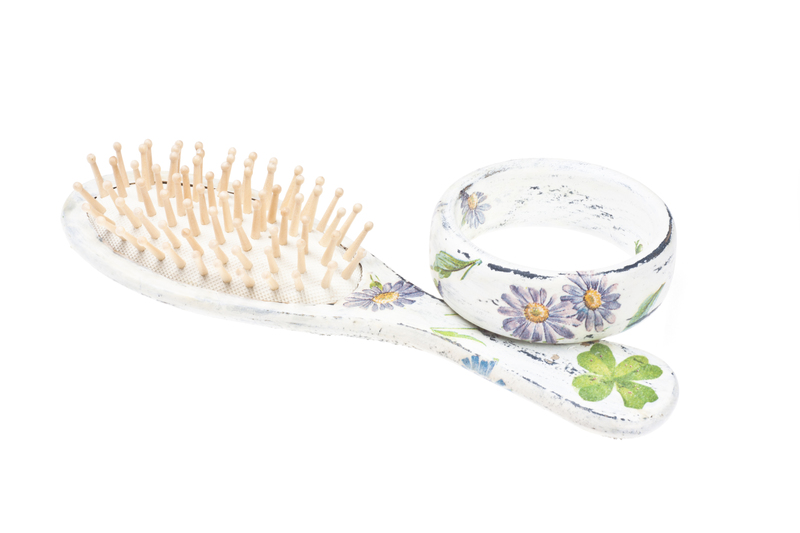Repurpose Discarded Materials to Craft One-of-a-Kind Home Accessories
Are you looking to infuse creativity, sustainability, and personal expression into your living space? Repurposing discarded materials to create unique home accessories is an innovative way to minimize waste while beautifying your home. This eco-friendly approach not only helps conserve resources but also enables you to add a personal touch and story to every corner of your home. Whether you're an eco-conscious homeowner, a thrifty decorator, or a creative DIY enthusiast, this comprehensive guide will inspire you to turn trash into treasure!
Why Repurpose Discarded Materials for Home Decor?
Repurposing discarded materials is about much more than just saving money--it's a lifestyle choice that supports the planet and sparks creativity. Here's why this approach is rapidly gaining popularity among decorators and homeowners:
- Eco-Friendly Living: By reusing waste materials, you help reduce landfill waste, cut down on resource consumption, and lower your carbon footprint.
- Customization: Crafting home accessories from reused items allows for unmatched customization. Your decor pieces will be truly one-of-a-kind, reflecting your personality and style.
- Cost-Efficiency: Using what you already have--or what others discard--saves you money compared to store-bought home accessories.
- Conversation Starters: Unique, upcycled pieces add character to your home and often come with fascinating stories.
- Creative Fulfillment: Crafting with repurposed materials can be a joyful, therapeutic process that unleashes your inner artist.

What Discarded Materials Can Be Repurposed?
Almost any item headed for the trash can be given a new lease on life as a home accessory. For best results, keep an open mind and learn to spot potential in the mundane. Here are some commonly used materials:
- Old wood (pallets, crates, broken furniture, scrap planks)
- Used glass (bottles, jars, windows, mirrors)
- Worn textiles (clothing, towels, linens, curtains)
- Discarded metal (tin cans, wire, pipes, cutlery)
- Plastic containers (bottles, tubs, caps, packaging)
- Paper products (books, magazines, newspapers, cardboard)
- E-waste (old CDs, circuit boards, computer parts)
- Everyday items (broken dishes, unused utensils, shoe boxes, corks)
10 Creative Ways to Repurpose Discarded Materials into Unique Home Accessories
Ready to start your upcycling adventure? Here are detailed, SEO-optimized ideas to inspire your journey in crafting one-of-a-kind home accessories from discarded materials:
1. Pallet Wood Shelves and Wall Art
- Disassemble old shipping pallets and sand the wood.
- Build floating shelves, rustic trays, or geometric wall art.
- Add hooks for coat racks or entryway organizers.
Benefits: Durable, rustic, and highly customizable. Pallet wood can be painted, stained, or left raw for a shabby-chic look.
2. Mason Jar Lanterns, Vases, and Storage
- Clean and de-label glass jars or bottles.
- Fill them with fairy lights, candles, or flowers.
- Paint, etch, or decorate jars with twine and beads for added style.
Benefits: Incredibly versatile--use upcycled glass jars for bathroom storage, plant terrariums, or ambient outdoor lighting.
3. Textile Transformation: Rag Rugs and Fabric Art
- Tear old clothing or linens into strips.
- Braid or crochet these into decorative rugs, pillow covers, or wall hangings.
- Patchwork method: Quilt scraps together for a vibrant, bohemian throw or tablecloth.
Benefits: Soft, colorful, and sustainable. This method is ideal for unused t-shirts, jeans, or bedding.
4. Tin Can Planters and Organizers
- Wash and remove sharp edges from empty food cans.
- Paint, decoupage, or wrap with jute for personalized accents.
- Plant succulents, herbs, or use as desk organizers.
Benefits: Adds metallic charm while reducing landfill-bound metal waste. Perfect for windowsills and desks!
5. Cardboard Creations: Wall Art and Storage Boxes
- Stack cardboard for sturdy storage units or wall shelves.
- Cut into shapes for layered wall art or photo frames.
- Cover with fabric, paint, or wallpaper scraps for a polished look.
Benefits: Lightweight, flexible, and kid-friendly. Cardboard is perfect for quick, low-cost home decor projects.
6. Upcycled Bottle Cap Magnets and Art
- Rinse and flatten colorful bottle caps.
- Glue decorative images or photographs inside the caps.
- Attach magnets to the back for fridge art, or arrange into mosaics for unique wall pieces.
Benefits: Small, eye-catching, and fun--a brilliant way to repurpose metal and plastic bottle caps.
7. Broken China Mosaics
- Break chipped plates and cups into smaller pieces (wear gloves for safety).
- Arrange and glue pieces onto old trays, plant pots, or tabletops to create mosaic patterns.
- Grout the finished surface for durability.
Benefits: Gives new life to sentimental or beautiful dishes that can't be used as intended.
8. Vintage Suitcase Tables and Storage
- Attach wooden legs or a metal base to old suitcases.
- Line the inside with fabric for hidden storage.
- Use as quirky side tables or bedside stands.
Benefits: Combines style and function, unlocking storage and nostalgia in equal measure.
9. Tech Trash to Treasure: CD Mirror Frames & Circuit Board Clocks
- Break unused CDs/DVDs for shimmering mirror or photo frames.
- Mount computer circuit boards in shadow boxes for futuristic wall art.
- Transform hard drive platters into modern timepieces with clock kits.
Benefits: Shows off your love for technology while keeping harmful e-waste out of landfills.
10. Drawer and Ladder Repurposing
- Turn drawers from broken dressers into rustic shelves or shadow boxes.
- Paint and hang on walls or stack for modular shelving.
- Use old wooden ladders as bookshelves, towel racks, or hanging plant holders.
Benefits: These larger pieces make dramatic decor statements using only "junk" furniture.
Tips for Successful Upcycling and Repurposing
- Start Small: Test your skills and ideas on mini-projects before tackling bigger pieces.
- Prioritize Safety: Always wear gloves, masks, and protective eyewear when sawing, sanding, or handling broken items.
- Use Proper Tools: Invest in quality adhesives, paints, and hand tools. Cleaning products are essential, too.
- Get Inspired: Browse DIY blogs, Pinterest, and YouTube for repurposed home accessory ideas.
- Personalize Your Projects: Add unique touches--paint colors, stencils, or family photos--to make each piece your own.
- Share and Swap: Join online upcycling groups to exchange materials, ideas, and finished products!
The Environmental and Social Impact of Upcycling at Home
By choosing to craft home accessories from repurposed materials, you're making a lasting impact:
- Reducing landfill waste and demand for new raw materials
- Inspiring friends, family, and your community to embrace sustainable living
- Supporting a circular economy and green innovation
- Connecting with your household through creative, hands-on projects
Repurposing waste to create artistic home decor fosters a sense of accomplishment and stewardship that traditional decor shopping simply can't match.
Inspiring Real-Life Examples of Upcycled Home Accessories
1. The Wine Cork Bulletin Board
A wine lover repurposed hundreds of discarded corks to construct a stylish kitchen bulletin board. Each cork, carefully glued onto a repainted old frame, reminds her of evenings with friends and supports her commitment to recycling home materials.
2. Bookcase from Wooden Crates
An enterprising student stacked and screwed found wooden crates into a modular bookcase, complete with hidden LED lighting. It became a stunning feature in his living room, all for a fraction of the cost of traditional furniture.
3. Bicycle Wheel Wall Clock
A passionate cyclist with a pile of bent wheels transformed one into a dramatic wall clock using salvaged hands and motor, blending personal passion and green living.
Where to Source Materials for Repurposed Home Accessories
- Thrift stores and charity shops: Uncover hidden treasures at low prices.
- Online marketplaces: Search for free or low-cost "curb alerts" or giveaway listings.
- Construction sites: Ask for discarded wood or surplus building materials.
- Friends and family: Collect unwanted textiles, furniture, or decorative items.
- Your own home: Periodically assess your belongings for hidden upcycling potential.

Frequently Asked Questions About Repurposing Discarded Materials for Home Accessories
Is upcycling expensive or time-consuming?
Most projects can be done on a tight budget and with basic tools. The time invested depends on the complexity and your skill level. Start with small projects and build up!
How do I make sure my upcycled home accessories look professional?
Pay attention to cleaning, surface preparation, and finishing touches like paint or sealant. Personalization is key--imperfections can enhance the uniqueness of your creations!
What are the most beginner-friendly materials?
Glass jars, tin cans, and old textiles are the easiest to work with. Try your hand at simple projects like jars-turned-vases or fabric scrap banners before moving on to complex furniture.
Can repurposed items be used outdoors?
Yes--just make sure to seal wood against moisture, use rust-resistant metals, and avoid paper or thin plastics exposed to the elements.
Conclusion: Your Home, Your Story--Crafted Sustainably
Repurposing discarded materials to create one-of-a-kind home accessories is a creative, earth-friendly, and rewarding way to decorate your living space. Each upcycled piece brings with it a story, a memory, and a unique sense of pride. Whether you're fashioning a light fixture out of an old colander or weaving a rug from vintage t-shirts, your commitment to sustainable home decor inspires others and makes a positive environmental impact.
Dive in--explore the endless possibilities your "junk" holds, and let your imagination lead the way to a home filled with beauty, function, and meaning!
Start today and become a part of the upcycling movement--your future self and the planet will thank you!
